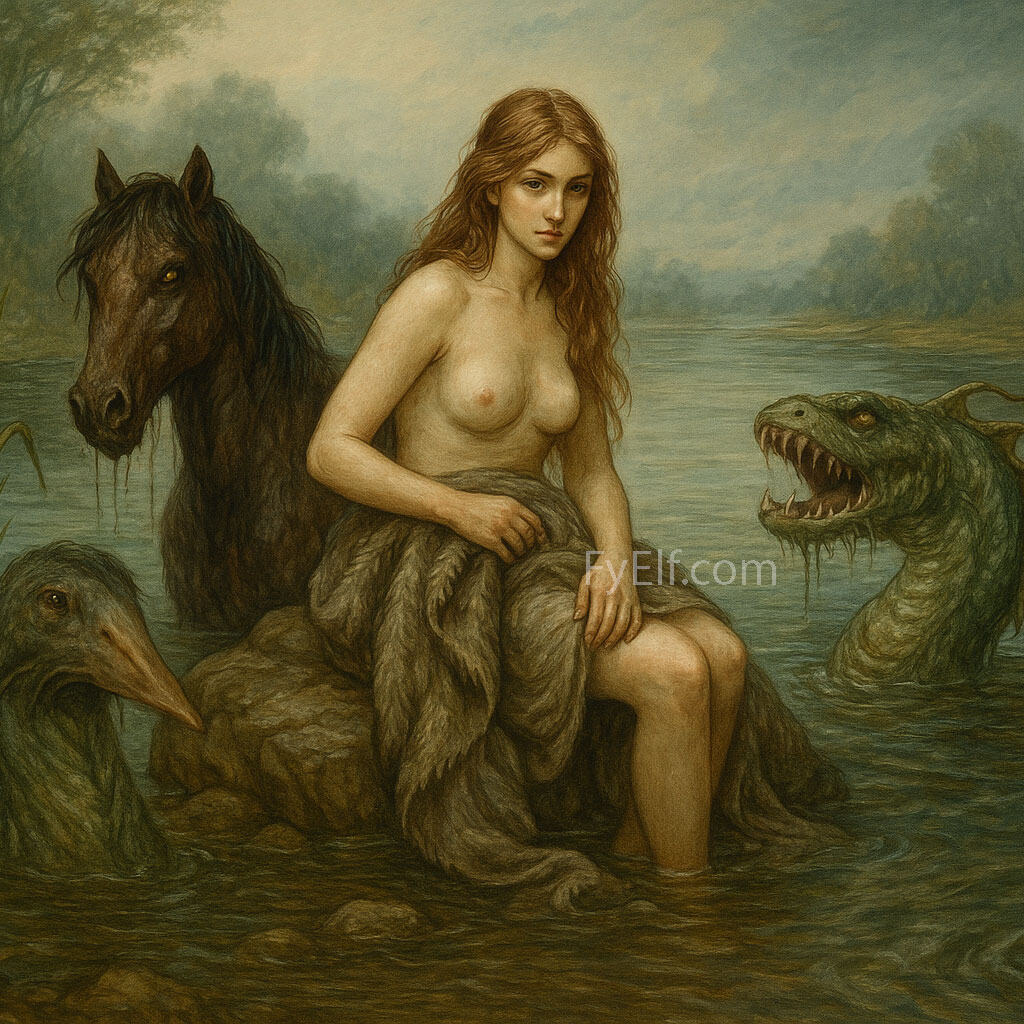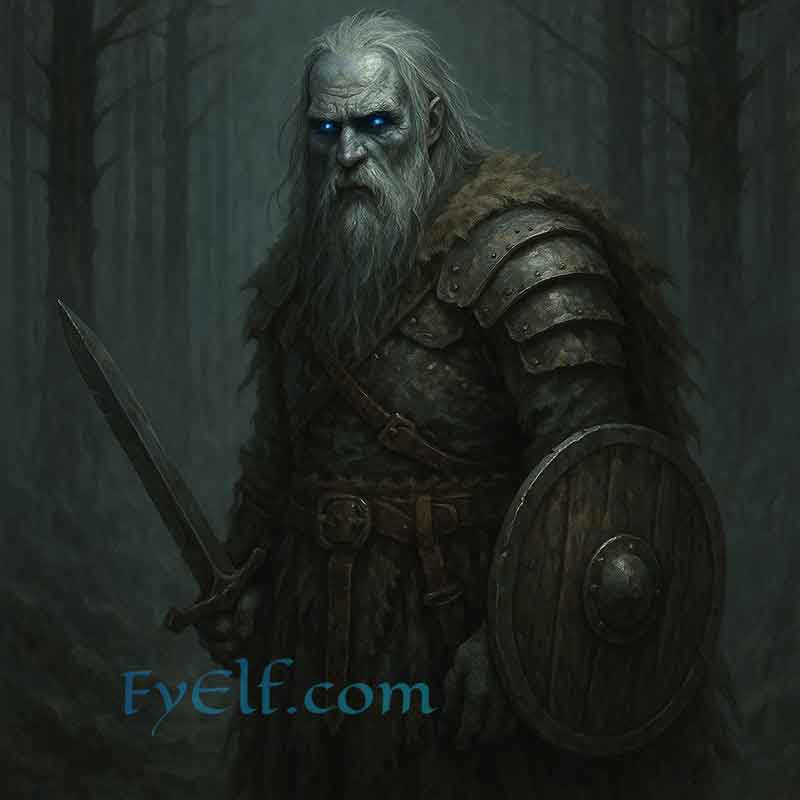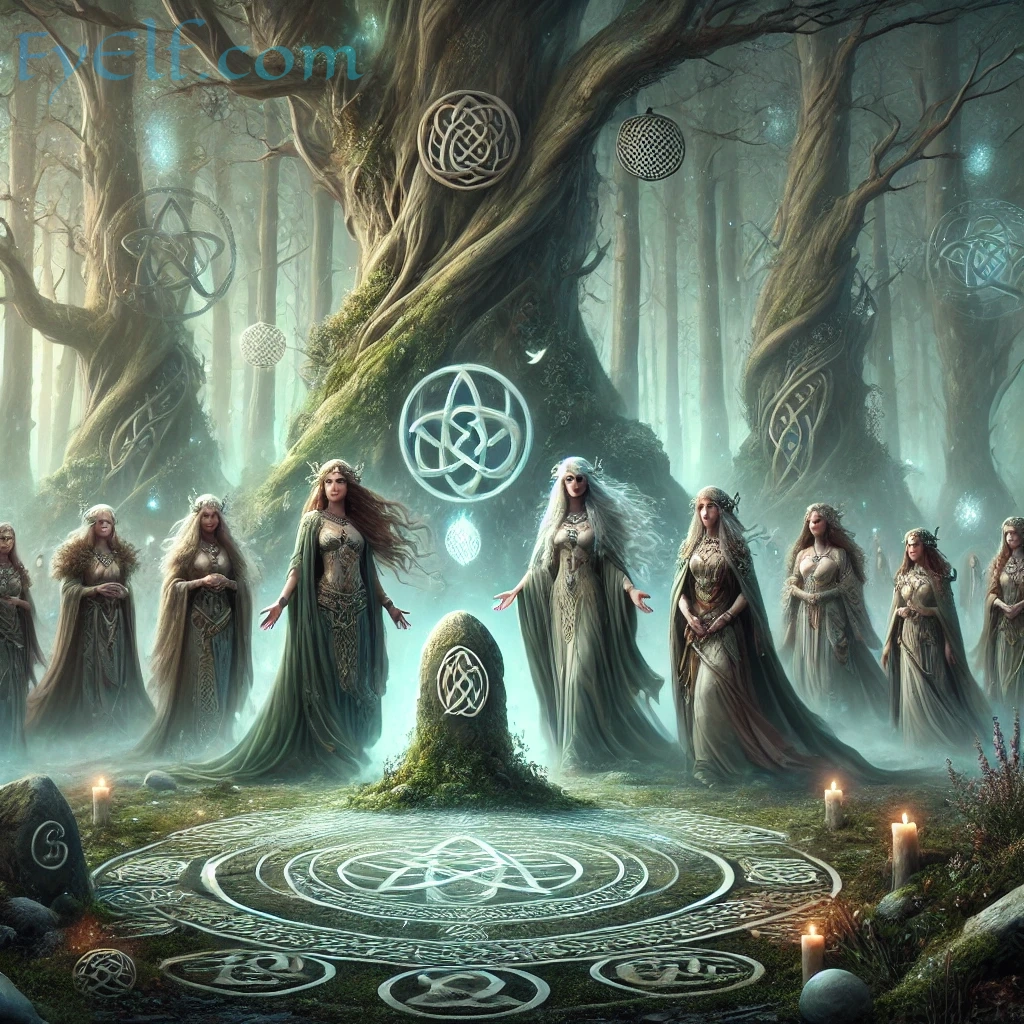From serene riverbanks to storm-tossed oceans, water has always stirred the imagination. Beneath its surface, ancient peoples believed, lived mysterious beings—spirits and monsters who could change their shape, lure humans, and guard hidden realms. Across cultures, shape-shifting water creatures are some of mythology’s most enduring figures, blending beauty, terror, and mystery.
In this post, we’ll explore legendary aquatic shapeshifters from around the world—each with unique abilities, symbolism, and cultural meaning. From Celtic kelpies to Armenian Nhangs, these beings reveal how deeply humans have both feared and revered the waters that sustained them.
1. The Kelpies – Celtic Horse Spirits of the River
In Scottish folklore, kelpies are sinister water spirits said to haunt rivers and lochs. They often appear as beautiful horses, luring people—especially children—to ride on their backs. Once mounted, victims find themselves stuck, unable to dismount, as the kelpie dives into the water to drown and devour them.
But kelpies can also transform into attractive humans to seduce adults, blending allure with lethal danger. Their stories warn of the deceptive nature of water: calm on the surface, but deadly beneath.
2. The Nhang – Armenia’s Dreaded Water Shapeshifter
In Armenian mythology, the Nhang is a terrifying aquatic spirit that resides in rivers, lakes, and springs. This creature is known for its shape-shifting powers, often taking the form of a beautiful woman, a beast, or a serpent to lure unsuspecting travelers.
Once its victim is close, the Nhang strikes—dragging them into the depths. Sometimes associated with illness and madness, Nhangs were feared as much as they were respected. Some stories claim that a Nhang could shapeshift into a horse, similar to the Celtic kelpie, while others describe it as a dragon-like water serpent.
3. The Selkies – Seal-Folk of the North
From the windswept coasts of Scotland and Ireland comes the legend of the selkies, gentle sea creatures who live as seals in the water but shed their skins to become human on land.
Stories often revolve around romance and tragedy—a fisherman stealing a selkie’s seal skin, forcing her to remain human and marry him. Though she may grow to love her family, the moment she finds her skin, she returns to the sea, leaving everything behind.
Selkies reflect themes of freedom, captivity, and longing, deeply rooted in the oceanic cultures of the North Atlantic.
4. Ningyo – Japanese Fish-Humanoids with a Curse
In Japanese folklore, the Ningyo is a strange, shape-shifting creature resembling a human-fish hybrid. Described as having a monkey’s mouth and golden scales, it brings both blessing and doom.
If caught, a Ningyo brings storms and misfortune—but its flesh is said to grant immortality. One famous story tells of a girl who accidentally ate Ningyo meat and lived for 800 years.
The Ningyo is a powerful symbol of temptation and consequence, reinforcing the idea that interacting with the mystical sea world comes at a price.
5. Rusalka – The Vengeful Spirits of Eastern Europe
The Rusalka of Slavic mythology is a female water spirit born from tragedy—often a woman who died by drowning or was betrayed in love. Rusalka are said to appear as beautiful young women, luring men with their charm and song, only to drag them into rivers or lakes.
Though sometimes benign, helping water crops or protecting bodies of water, they are more often portrayed as vengeful and dangerous, embodying the power of sorrow and betrayal tied to water’s depth and mystery.
6. The Vodianoi – Slavic Male River Spirits
Another fearsome shapeshifter from Slavic lore, the Vodianoi is an old male water spirit with a frog-like appearance, moss-covered hair, and glowing red eyes. He is known to guard lakes and rivers, and drown those who disrespect his domain.
The Vodianoi can also appear as a handsome man to lure people into trusting him, or as a harmless object floating on the water. His unpredictable nature made him both feared and honored through offerings and rituals.
7. The Sirens – From Bird-Women to Sea Maidens
Though often confused with mermaids today, the original Sirens in Greek mythology were bird-bodied women whose voices enchanted sailors to wreck their ships.
Over centuries, their image evolved into that of mermaid-like creatures, especially in medieval and modern retellings. Sirens became the archetype of the dangerous, seductive water woman, a motif seen in many cultures.
Whether feathered or finned, Sirens remind us of the irresistible pull of the sea—and its peril.
Themes Behind the Myths
Across continents, water shape-shifters often embody similar ideas:
- Deception & beauty: Many appear alluring but hide deadly intentions.
- Transformation & freedom: Creatures like selkies and Nhangs reflect the tension between human society and wild nature.
- Respect for nature: These myths served to warn people not to underestimate rivers, seas, and lakes, which could offer life—or sudden death.
Why These Myths Still Matter
Even in a modern world where the ocean is mapped and rivers are bridged, water remains untamed in many ways. The ancient tales of shapeshifting water spirits remind us of how people once interpreted the dangers of their environments—and how these stories still resonate in modern literature, film, and art.
Whether as metaphors for emotional depths or as warnings cloaked in fantasy, these creatures continue to capture our imagination.




